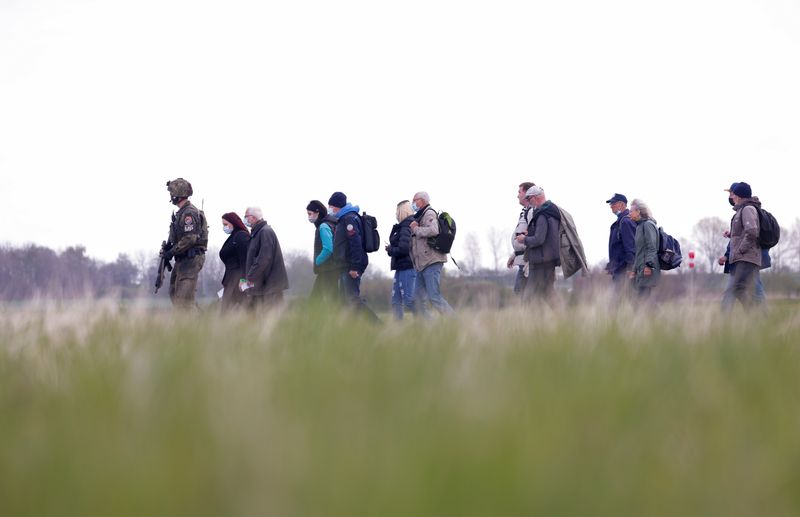BERLIN (Reuters) – Refugees arriving from Ukraine have helped drive Germany’s population to its highest level, the Federal Statistical Office said, with more than 84 million people now living in the European Union’s most populous country.
Germany has one of the world’s lowest fertility rates and by some measures its most aged population, but its wealth, demand for labour and relatively open immigration policy made it an attractive target for migrants even before the EU opened its doors to Ukrainians fleeing their country after Russia’s invasion in February.
In a report issued on Tuesday, the Federal Statistics Office said that the population had grown by 1%, or 843,000 people, in the first half of 2022. The population grew just 0.1% over the whole of 2021. Germany recorded net immigration of 750,000 people from Ukraine over the same period.
Growth on a comparable scale has been seen only three times since German reunification in 1990, and each time was linked to a wave of refugees.
In 1992, refugees from the war in former Yugoslavia helped swell the population by 700,000. In 2015, Germany let in almost a million refugees from war in the Middle East.
Germany’s female population grew by 1.2%, significantly more than its male population, which increased by 0.8%, reflecting the fact that mainly women and children fled the war in Ukraine. Men of fighting age are forbidden from leaving the country.
(Reporting by Klaus Lauer, writing by Thomas Escritt, editing by Nick Macfie)
